Search: Box Kick By Winger
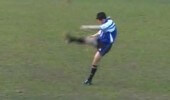
Box kick by winger
A box kick. Used to kick behind the opposition but with enough height to allow attackers to chase the ball
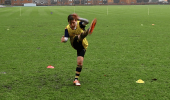 6:00
6:00
Techniques needed to box kick
Elite coach and player go through the skills required to box kick. There are three main steps and some recommended practises with some added competition to help improve
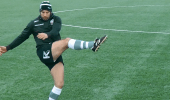 1:05
1:05
Position-Specific Skills - The Box Kick
London Irish DoR Brian Smith discusses the box kick and it's relevance in modern rugby tactics. Skills such as kicking take hours of practice to master, but should be done in a specific, game related way.
To watch over 2500+ videos join now for free!
JOIN NOW 4:18
4:18
Kick accurately - Technical Points
The box kick is an important tool in modern rugby tactics. A well-executed box kick along with a strong kick-chase can put teams under a lot of pressure, forcing errors, gaining territory and often reclaiming the ball. This video focuses specifically on how the ball should be struck for distance and accuracy. This can be transferred to punt kicks as well.
 5:54
5:54
New Kicking Games
Adding variety to your kicking practises will engage your players and motivate them to step up to the challenge. Dave Walder from Newcastle Falcons introduces Three new kicking games in this clip
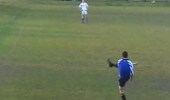 0:05
0:05
Tramline kick
Wingers positional skills. A kick straight down the channel on the run
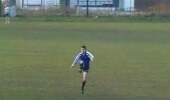 0:09
0:09
High kick
Wingers positional skills.
The Kicking Game - Kicking Progressions
The Kicking Game - Kicking Progressions
 0:12
0:12
Lions 09 - tactical kicking - dropping back for kick-return
Positioning ready for the kick return is a systematic approach to countering pressure
The Kicking Game - Kicking Progressions
There are several variations of the punt kick but the basic key factors remain the same
Head over the ball, drop onto the lace, tight core at point of contact, follow through to be straight
 0:18
0:18
Lions 09 - tactical kicking drill - kicking from 12
Tactical kicking can be undertaken by different players
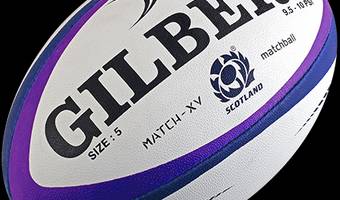 2:06
2:06
L2 - Kicking Development
Skill Practice Description • The teams start with kicking netball i.e. the kicker cannot run and cannot be interfered with. • The player with the ball kicks to work the ball up field and a clean catch behind the goal line is 1 point • Other ways to score are by a drop goal awarding 3 points. • If a breakdown occurs the coach can award a free kick. • The ball carrier can choose to kick to a team mate or try for a target. • The targets can only be aimed at when the targets are in the other half of the pitch. • If the target is missed, possession goes to the other team. • Progression; the kickers must be ‘running’ when kicking the ball. • They must kick within 5 - 8 metres of running. They cannot just keep running with ball in hand. • Players can chip and catch for themselves. • This gives more opportunity for free kicks to be awarded through breakdown in play. • Allow players to discover personal techniques of kicking with both right and left foot. Punt, • Grubber etc. • Discourage throwing the ball up and develop the drop. • Identify those with consistently low outcome percentages and address the relevant technical factors
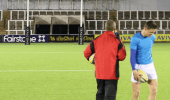 1:53
1:53
Kicking - Striking The Ball
Accurate kicking requires an understanding of how the foot should strike the ball. Expert kicking coach Dave Walder delivers a coaching clinic detailing the key factors and steps coaches should follow
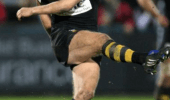 4:27
4:27
The Science Behind Goal Kicking
There is a science and a process that underpins kicking at goal. This video clip takes you through the key factors to focus on when practising your kicking
L2 - Kicking Target Game
Skill Practice Description • Scan and make decisions. • Set up the kick that makes the win scenario by moving the opposition. • Hold and drop of the ball. • Head over the ball and weight forward to reduce scope for error. • Don’t lean back and open scope for error. • Contact with lace, point toe and straight follow through. • Leg speed to generate power. • Catch with hands ready and elbows close. • Keep eye on the ball and watch the ball into the catch. • Gather, scan and return kick accurately Relevance to the Game • This game develops scanning and tactical decisions. • Develops technical accuracy.
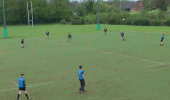 6:18
6:18
Kicking Games
The coach uses a variety of games - and includes the players in this process - to provide some variety and present different challenges in a kicking session
 2:34
2:34
Kicking Longer Using your Weight
Kicking longer distances is an attribute many players strive for. Dave Walder from Newcastle Falcons explains how to use your weight to get those extra metres
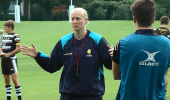 3:12
3:12
Kicking in Training Games
Community Coach Tamara Taylor explains the challenges and benefits of allowing kicks in conditioned touch games at training.
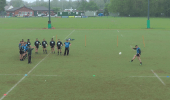 4:02
4:02
Learning to punt Kick
The coach explains the technical points to enable players to deliver a punt kick. The coach uses examples and questions the players for feedback and confirmation of understanding
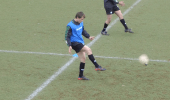 3:57
3:57
Learning to grubber Kick
A series of technical exercises and games to coach the grubber kick. The coach is clear in his explanations and uses questioning with his players to reinforce the key points. The games include some fun moments
 3:10
3:10
Kicking - Striking The Sweetspot
If you strike the ball in the right place you are halfway to delivering an accurate kick. The "Sweetspot" of the ball is significantly larger than you may think. This clip explains where the sweetspot is and how to get a good connection
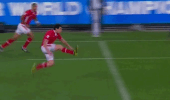 0:53
0:53
JWC 2012: Kicking
At the JWC 2012 there was an increase in the amount of kicks in each match. This may be due to improved defensive structures.
 2:10
2:10
Grubber Kick Progressions
Progress the technical skill of the kick into more of a game related scenario. The coach could vary the numbers of players in this practise. Always conclude the exercise by confirming the technical points
Coaching 7-a-side Rugby - Restarts; kicking long
The objective for the kicking team is to back their defence and force a turnover ball
Also utilised the long kick if you do not have an accurate and consistent kicker
If you are the receiving team, have four players up near the 10m line
Coaching 7-a-side Rugby - Restarts; kicking short
As possession is king, gaining possession from a kick off is vital for effective 7s. Especially considering that the team that scores takes the kick off.
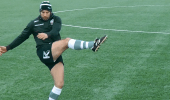 1:28
1:28
Driven Lineout Strategy
The lineout & box kick has become increasingly more important this season, Brian Smith from London Irish explains what "Exits" are and why they are important
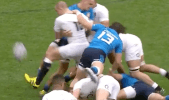 3:27
3:27
Breakdown - Clear & Kick
Teach your players how to kick the ball at the ruck. With players sometimes reluctant to give away penalties this technique is a great way to turnover the ball and stay on your feet
Kick Off receipt practice
This clip shows a coach working with adult players, isolating the skills for receiving a kick off restart
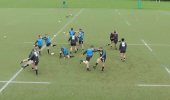 3:09
3:09
Kicking Session Warm up
The coach uses small sided games with progressions as part of the players warm up with a focus on the stretches that are related to kicking. Moving between the games and dynamic stretches keeps the players motivated, active and gets the blood flowing
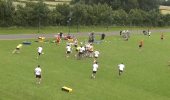 0:34
0:34
Defence - Exit & Kick-chase
Defence - Exit & Kick Chase
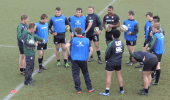 3:48
3:48
Using Questions to Coach (Kicking Technique)
How to coach - The coach uses questioning as his main coaching style. The players identify the technical points with the coach providing prompts and reinforcement
 3:41
3:41
Kicking - The Drop / Ball Placement
Dropping the ball properly is considered the main priority for many kickers, if they get the drop right then the other techniques fall into place. Dave Walder from the Newcastle Falcons explains some of the skills
QBE - Kicking Development
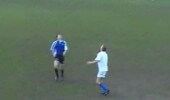 0:10
0:10
Crossfield kick
A useful attacking tool to have if an opportunity is spotted on the far side of the field. This kick will turn the defenders
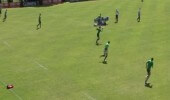 0:24
0:24
Lions 09 - tactical kicking drill 1
Developing an awareness of how to apply pressure through an effective kick chase policy
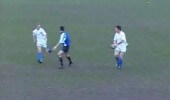 0:06
0:06
Winger blocking techniques
Winger positional skills.
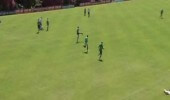 0:13
0:13
Lions 09 - tactical kicking drill - chase and return
Developing an awareness of applying pressure through an effective kick chase system
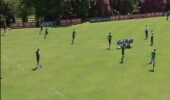 0:33
0:33
Lions 09 - tactical kicking drill 2 blindside
A practice for developing understanding the role of chasers and counter kicking
The Kicking Game - Adult
When assessing the technical and tactical ability of the kicker, the coach should consider the intent and the outcome of the kick
If the intent does not correspond with the outcome, there may be a techical issue or a lack of tactical understanding
Watch the players in this clip and assess their intent and outcome
The Kicking Game - Youth
When assessing the technical and tactical ability of the kicker, the coach should consider the intent and the outcome of the kick
If the intent does not correspond with the outcome, there may be a techical issue or a lack of tactical understanding
Watch the players in this clip and assess their intent and outcome
QBE - Kicking Target Game
Tackling 24 - Game Situations and Kick Chase
Infringements Clip 5 - Kick Off Not 10
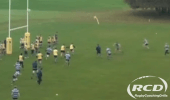 1:31
1:31
Kick Out Touch
This game simulates a counter-attack situation. The attacking side must gather the ball, look up to assess the defensive line, and attack the right areas. Start with fewer defenders, adding one on each attempt to increase difficulty. Progression: Defensive lines should vary between a wide or narrow alignment, to test the decision-making of the attackers.
Materiality Clip 8 - Open Play Kick
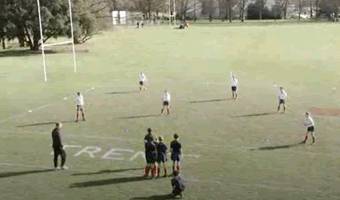 4:15
4:15
CCRU Game - Rugby Rounders
Aim of the Game: The batting player kicks or throws the ball forward into play. Make sure that the size and shape of the ball is appropriate to the age of the players. To get the batter out, the fielders may catch the initial kick or throw before it bounces or complete three passes before the batter gets all the way round the cones and back to base cone. The fielders develop their passing, catching and communication skills. The batter is encouraged to think tactically with regard to their initial kick or throw and subsequent running decisions
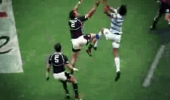 4:10
4:10
Sevens - Uncovered - The Aerial Battle
Re - starts are as numerous as scrums in seven's and coaches should put as much emphasis on the kick off as any other facet of the game. Possession is crucial in seven's and an effective re - start strategy can win not only matches but tournaments for teams. You must posses players who can kick and contest the ball in the air becasue if not you will be competing without the ball for long periods of the match. Listen to the top coaches on how important they think the kick offs are
L2 - Half Back Development
Skill Practice Description • Each player is given a number. • From any tackle point or breakdown, as the attacking team is about to start another attack, the coach calls out a number and the defending player with that allocated number retires three paces before moving forward as the others step up. • This leaves a miss alignment in the defence line. • The fly half is required to notice the opportunity and attack the miss alignment and deliver the ball accordingly. • A progression is for the numbered player to step forward early, creating the opposite miss alignment. • If the forward player is the wing, then the fly half may chose to use a kick to get behind the defence. • The opportunity may appear on the short side and the fly half needs to be aware and communicate to the scrum half. • Now develop the decision making further by even numbers step up and odd numbers retire. Key Coaching Points • Scanning skills. • Attacking an opportunity offered by the defence alignment. • Decision making skills. • Appropriate passing (short, long, flat, deep etc. • Appropriate kicking (grubber through, chip over, cross kick etc.) • Look-Think -Do Process
L2 - Decision-making Development
Skill Practice Description • The coach kicks the ball out to the waiting attackers from under the posts. • The coach calls out a number of defenders to defend (4 in the example). • This number can change depending on ability. • The attacking team need to catch the ball and attempt to score on the try line without being touched (more than 1 touch can be allowed depending on ability) • Dropping the ball or being touched in possession results in a fail and all attackers must return to the 10m line before starting again. • The drill can be used as a competition by allowing each team a specified number of attempts before swapping the sides, the team scoring the most tries wins. Key Coaching Points • Being aware of the space between attack and defence • Using depth and not attacking in a flat line • The need to create 3v2’s and the ultimate goal of creating 2v1’s. Relevance to the Game • Attacking a broken field. • Collecting a lose kick and counter attacking with an assessment of the • opportunities presented. • Appropriate selection of pass i.e. long or short
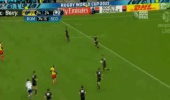 0:29
0:29
Men's - Counter Attack Plays
Not all kicks work out succesfully, in this clip the defenders turn a poor kick into a great counter attack
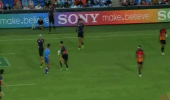 0:52
0:52
IRB 7s - Tries from Penalties
During the 2011/12 Sevens World Series, the most fruitful source of tries was penalties and free kicks.
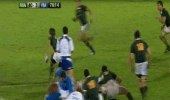 1:05
1:05
JWC 2012: Quick Taps
At the 2012 JWC there was an increase in the amount of tries scored from quick taps from free kicks and penalties.
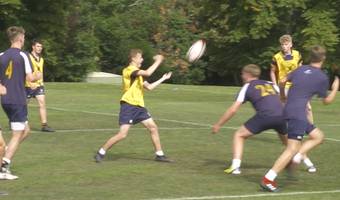 3:54
3:54
Offside Touch - Heads Up Rugby
Use this game of offside touch to force your players to play with their heads up to identify space. One player per side can play in an offside position and players are allowed to kick.
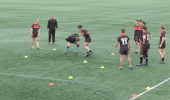 3:55
3:55
Games for coaching Contact
The coaches use a variety of conditions for both the attackers and defenders to reinforce the coaching points. Small sided games enable players to learn in a live environment similar to actual match conditions
 3:06
3:06
Gloucester Warm Up
Coaching is constantly changing and so does the "Warm Up", this clip goes inside the Gloucester academy squad during their end of season finals at the Allinaz stadium. You should find some new ideas
 0:49
0:49
Interview - Conor O Shea scrum halfs
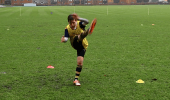 3:54
3:54
Accuracy under Pressure (Six Nations Review)
A look at the 2014 Six Nations match between England and Wales, and thoughts on developing accuracy under pressure.
 6:00
6:00
How Gloucester academy prepare for matches
See how the Gloucester academy manager prepares his squad prior to an academy fixture. The warm up includes lots of games, stretching and unit skills with a gradual increase in intensity
 1:01
1:01
Expert - Conor O Shea - What makes a great scrum half
Conor O Shea discuss the profile of scrum half
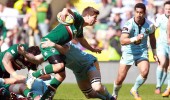 2:22
2:22
Focus on Scrum Half
Great scrum halves always bring their own individual elements to the game, but an excellent command of the basic skills is essential for all of them. Join now to see position-specific exercises and tips from Aviva Premiership Rugby players and coaches.
 3:32
3:32
Geech - Coaching Philosophy
Sir Ian provides an insight into the famous British Lions tour in 1997 and how important it is to have a clear philosophy. This ground breaking tour still has fundamentals that apply today
 0:36
0:36
Dynamic Jog with Balls
A light team jog with varied dynamic movements to warm up the body for stretching. As a likely first exercise, including a few balls is good to get the players' hand-eye coordination, and concentration kick-started.
3. Half Back Play Continued
A scrum half needs good vision, speed and awareness, quick hands and lightning reactions. The scrum half is the key link between the forwards and the back line. A good scrum half will know how to vary the play and take advantage of any opportunity that the opposition may offer
The fly half is the heart beat of the side and should be a key influence on the way the team plays the game. Almost every attack will go through the fly half, so they need to develop tactical awareness, accurate passing, kicking accuracy, vision, leadership and resilience
Half Back Play - Under 13 and 14
A scrum half needs good vision, speed and awareness, quick hands and lightning reactions. The scrum half is the key link between the forwards and the back line. A good scrum half will know how to vary the play and take advantage of any opportunity that the opposition may offer
The fly half is the heart beat of the side and should be a key influence on the way the team plays the game. Almost every attack will go through the fly half, so they need to develop tactical awareness, accurate passing, kicking accuracy, vision, leadership and resilience
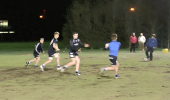 2:42
2:42
Attacking Options
Whether you're looking at fundamentals or strategy, we have loads of great examples and advice. Here's a small sample.
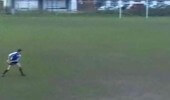 0:07
0:07
Infield pass
Wingers positional skills.
CCRU - Principles of Play - Go Forward
Go Forward using:
Running speed and balance
Evasive running
Kicking
 8:20
8:20
How to create & share coaching plans
This clip explains how to create coaching plans and share them with other people
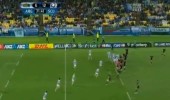 0:19
0:19
Men's - 3 v 2 1
A passage of play that shows how to attack with more attackers than defenders, a 3 v 2. The winger shows that strong running and determination can break tackles. Click on the practises in this section for coaching ideas
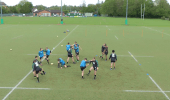 0:33
0:33
Warm up options
A warm up that uses some simple games as the central theme. The session planned is for kicking so the coach conditions the stretching accordingly
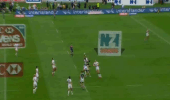 0:28
0:28
Sevens - Standard restart with attack winning ball 3
A well organised re start with one main attacker challenging for the ball with support both in front and behind him, if the ball is knocked either side of the main catcher the ball will be gathered by his teammates. Great leg drive to continue the attack and a very long pass to complete the scoring. Key factors : Accurate kick - Focus on the ball - Sideways jump - Catch ball above head - Structured support
Game Understanding - Penetrate and Outflank
Spread the defence in order to penetrate
Condense the defence in order to outflank
Draw the defence close and Kick through or over
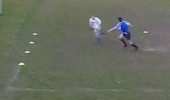 0:03
0:03
Wide channel defence
Wingers positional skills
Good Practice - Segment 3
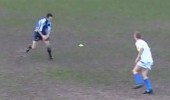
1 v 1 attack
Winger positional skills training.
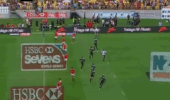 0:24
0:24
Sevens - Strike Moves 1
A simple but effective attack from a scrum. Three good passes provides the winger to run past his defender to score. Notice how the first reciever is directly behind the scrum and not to the side, (This makes the pass from the scrum easier when under pressure). Key factors : Position of 1st reciever - Run straigh and wide spin pass - Speed of the runner
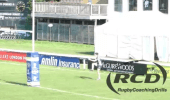 0:21
0:21
Sevens Drop-Goal Conversion
In seven-a-side rugby, conversions are executed by drop-kick, to save time. For the same reason, and as demonstrated here by Filton College, they can be taken from behind the posts, towards the field of play.
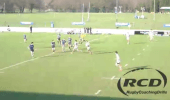 0:28
0:28
Strike move from Lineout
RGS Guildford secure lineout ball and perform a 'circle' ball, with the fly-half looping around the centre who pops the ball back to him. This is to draw in defenders, to create space out wide. The winger is able to exploit this space to complete the try.
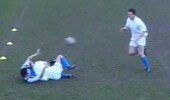
Offload after contact
Wingers positional skills.
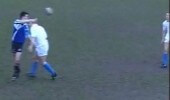 0:28
0:28
Offload in contact
Wingers positional skills.
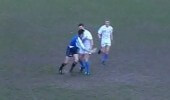
Offload before contact
Winger positional skills.
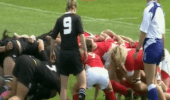 0:18
0:18
Women's - Straight Scrums 1
A well contested scrum from both teams. Good technique and body position ensure a solid and safe scrum. The red team use this restart to kick and gain territory. Key factors : Strong body position - Tight binding between the players - Calling - Players push in a straight line - Ball control from ther no 8
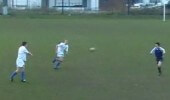 0:06
0:06
Handling open wing
Wingers positional skills.
L2 - Back Line Attack from Set Piece
Skill Practice Description • The objective of this game is to score from first phase. • The defence start on the try line and can only advance to the five metre line (gain line). • The attack must start from the 5 metre line if simulating a scrum and vary the starting points i.e. centre field. • If simulating a lineout start, use the 10 metre line to half way. • If the attack can score from the set piece they are awarded five points. • If they score after one phase they are awarded four points. • If they score after two phases they get awarded three points and so on. • If the attack fails to score after four phases they turn around and defend. • Kicking options may be introduced. • Five attacks each team. Key Coaching Points • Appropriate passing (short, long, flat, deep etc.) • Appropriate running lines; decoy / option / creating spaces / accelerating into space. • Support and reaction. • Look-Think -Do Process • Allow the players to self correct before intervention from the coach Relevance to the Game • Accuracy in decision making scanning and decoy / option running lines
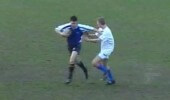 0:05
0:05
Hand off
An essential core skill in attack, the hand-off is particularly useful for wingers, who may have just one final defender to beat.
 1:54
1:54
Mike Catt - Commit the opposition 10
Classroom session with Mike Catt - discussing the key points of attacking from a lineout
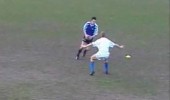 0:07
0:07
1 v 1 defence
Winger positional skills.
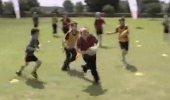 4:44
4:44
Tag Game - Break Out
Use this game to introduce "Decision making"
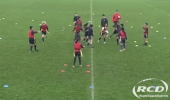 2:08
2:08
STG - Chaos
Another great game for developing spacial awareness and decision-making. The three key factors are: - Movement off the ball - Vision - Communication
 2:01
2:01
Approach to Basics
The academy approach to learning skills is to focus on the finer techniques and not move on too quickly until the players are competent at each component. This ensure quality and accuracy and ensures standards are met when the skill is put under pressure
 1:58
1:58
Conor O Shea - the Turnover
Conor O Shea discusses the importance of turnover ball and why coaches and players should work at this regularly
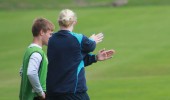 7:29
7:29
Defensive Game with Coaching Points
A touch game conditioned to develop the drift defence. Worcester Warriors Community Coach Tamara Taylor explains the objectives of the conditions, gives feedback and adjusts them when necessary.
 3:40
3:40
Tackle Techniques For Hard Ground
Tackle practise during the summer months can be tricky with the hard grounds. Using contact shields to improve the key safety features should be part of your training toolbox
 5:00
5:00
Simple Passing Exercises & Games
The Wasps coaches use a mixture of games and drills to develop the passing skills of young players. Players are encouraged to respond to questions. Games are used to improve the learning experience
 5:30
5:30
Adapt Your Coaching Style
There are significant changes in the approach to "How best to coach" with regards your coaching style and delivery skills. Here are some examples from some of the Premierships top coaches
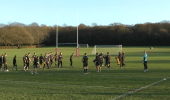 2:02
2:02
Broncos 3 - Develop waves of attack
The first wave of attackers identify space and punch through the first line of defence. The ball carrier looks to move the ball quickly and away from covering defenders. This exercise tries to copy game situations as players cover their team mates in defence
 2:35
2:35
Games for Developing Skills
The coach reinforces his use off games so his players learn techniques in a competitive and enjoyable environment. Breakout drills are used to correct technique with questioning a key component of learning
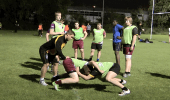 7:35
7:35
Scrum Technique Progressions for youths
Working from a single players body position to a full scrum can be daunting for some coaches. In this clip there are simple steps to progress and the technical points are consistent
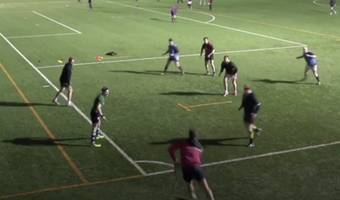 2:04
2:04
Quick Finishing Game
This quick game is perfect for developing the finishing in your team! Progress this drill with conditions to help improve depth and realignment.
 2:06
2:06
Create Opportunities for Success
We all prefer to have enjoyable training sessions. By including small-sided game and skills challenges, you provide more opportunities for your players to succeed, which in turn increases the enjoyment and benefit of the session.

